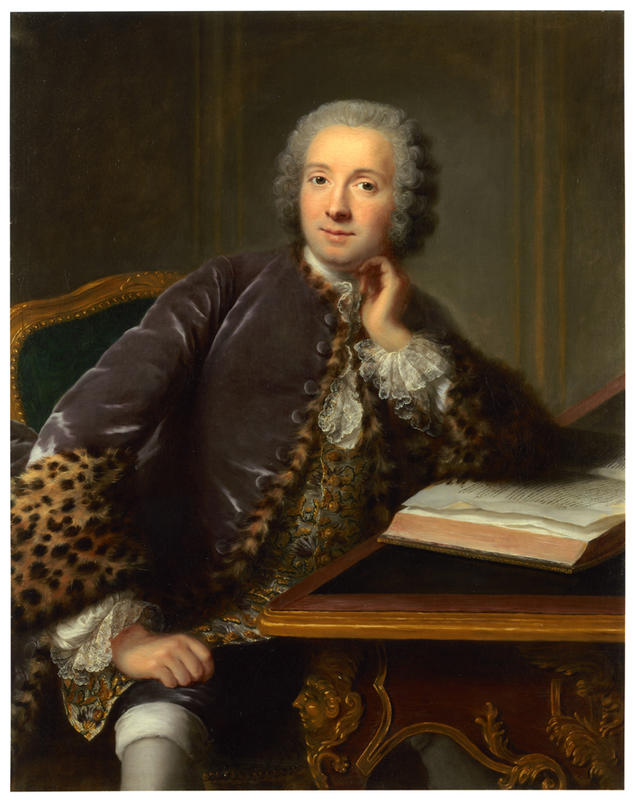More about Portrait of a Man Seated at a Desk

Contributor
As is par the course for famous portraits, this painting was a commission by a wealthy patron of nobility.
However, two things about this portrait stand out from the ordinary: the subject’s expression and the painter behind the canvas.
The Enlightenment was all the rage in the 1750s. With the discovery of Pompeii just two years prior, a revival in Greco-Roman artwork and culture was well underway in Western society. The airy, sugary atmosphere of Rococo was abandoned in favor of a more austere, grounded style. Portraits for males around this time followed the Neoclassical norm: carefully composed, dour figures that exuded authority and power, much like the heroes and gods of old.
Not this guy. The nobleman on the canvas chose to be portrayed with wide eyes and a warm, proud, yet reserved smile that was often seen more on female subjects of the time. You would be smiling too if you had your velvet coat lined with leopard fur, flexing on the peasantry and newly minted gentry. His body is reclined on the chair, relaxed and open, as opposed to the standing hand-in-waistcoat or hand-to-side poses that generals and kings were often portrayed in.
In the grander scheme of things, the nobleman’s expression is tame by modern standards, only to be overshadowed decades later by the wilder, more animated work of a certain meme-worthy gentleman.
The painter of this portrait was a woman, rare for the time. Marianne was lucky to be born into a family of artists, all of whom specialized in different mediums. The Loir family produced a long line of silversmiths for over a century. Unfortunately, only ten of her paintings so far have been discovered, largely in part to being overshadowed by her male peers and the difficulty of obtaining commissions due to her status as a woman, artistic skill be damned. She eventually moved to Marseilles, even allegedly staying in Rome for a time, to find more abundant opportunities.
Sources
- "France, 1600-1800 A.D." Heilbrunn Timeline of Art History. Accessed October 30, 2018. https://www.metmuseum.org/toah/ht/09/euwf.html.
- Marianne Loir." National Museum of Women in the Arts. Accessed October 30, 2018. https://nmwa.org/explore/artist-profiles/marianne-loir.
- "Portrait of a Man Seated at a Desk." Portlandartmuseum.us. Accessed October 30, 2018. http://www.portlandartmuseum.us/mwebcgi/mweb.exe?request=record;id.











